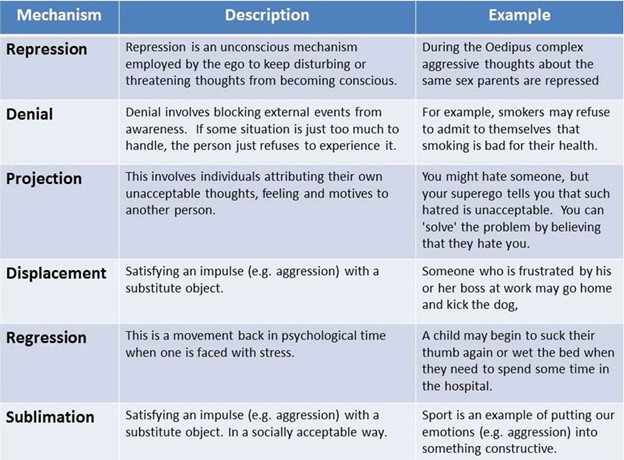A nurse at a college campus mental health counseling center is caring for a student who just failed an examination. The student spends the session berating the teacher and the course. The nurse should recognize this behavior as which of the following defense mechanisms?
Regression
Conversion
Projection
Undoing
The Correct Answer is C
A. Regression: Incorrect
Regression is a defense mechanism in which a person reverts to an earlier stage of development in response to stress or anxiety. For example, an adult might start behaving like a child when faced with a difficult situation. In this case, the student berating the teacher doesn't demonstrate a return to an earlier developmental stage, so regression is not the correct choice.
B. Conversion: Incorrect
Conversion refers to the conversion of emotional distress into physical symptoms, such as experiencing physical pain without any apparent physical cause. This mechanism is often seen in conditions like conversion disorder. The student berating the teacher is not exhibiting physical symptoms as a response to emotional distress, so conversion is not the correct choice.
C. Projection: Correct
Projection is the act of attributing one's own unacceptable feelings or thoughts to another person. In this scenario, the student is projecting their own failure onto the teacher and the course by blaming them for the failure. They are unable to accept their own role in the failure and are instead placing the blame on external factors. This aligns with the behavior described in the scenario.
D. Undoing: Incorrect
Undoing involves trying to compensate for or negate an unacceptable action or thought with a contrary action. For instance, someone who had angry thoughts might engage in excessive acts of kindness to "undo" those thoughts. The student berating the teacher is not engaging in actions to negate their negative feelings or thoughts; they are expressing their frustration directly.

Nursing Test Bank
Naxlex Comprehensive Predictor Exams
Related Questions
Correct Answer is ["1.5"]
Explanation
To calculate the number of clozapine 200 mg tablets needed to administer a total of 300 mg, divide the total dose by the dose per tablet:
300 mg / 200 mg = 1.5 tablets
Since you cannot administer half of a tablet, you would need to administer 2 tablets to achieve a total of 300 mg.
So, the nurse should administer 2 tablets of clozapine 200 mg each to achieve a total dose of 300 mg.

Correct Answer is B
Explanation
Gabapentin and phenytoin are not directly associated with causing vitamin B deficiencies. However, certain antiseizure medications could potentially affect nutrient absorption over time.
B) A client who has chronic alcohol use disorder.
Explanation:
Chronic alcohol use disorder can lead to a deficiency in several B vitamins, particularly vitamin B1 (thiamine), vitamin B2 (riboflavin), vitamin B3 (niacin), vitamin B6 (pyridoxine), vitamin B9 (folate), and vitamin B12 (cobalamin). Alcohol interferes with the absorption and utilization of these vitamins in the body, and individuals with alcohol use disorder are often at risk for malnutrition and vitamin deficiencies.
C) A client who takes heparin to prevent deep vein thrombosis:
Heparin is an anticoagulant and does not directly impact the absorption or utilization of vitamin B.
D) A client who has asthma:
Asthma itself does not significantly increase the risk of vitamin B deficiencies. Vitamin B deficiencies are more commonly associated with factors like malnutrition, certain medical conditions, or medications that impact absorption, as seen in chronic alcohol use disorder.
Whether you are a student looking to ace your exams or a practicing nurse seeking to enhance your expertise , our nursing education contents will empower you with the confidence and competence to make a difference in the lives of patients and become a respected leader in the healthcare field.
Visit Naxlex, invest in your future and unlock endless possibilities with our unparalleled nursing education contents today
Report Wrong Answer on the Current Question
Do you disagree with the answer? If yes, what is your expected answer? Explain.
Kindly be descriptive with the issue you are facing.
